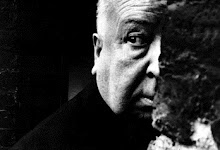Written for a survey art history course covering the Stone Age to the Gothic period, this paper examines two different pieces found in the Art Institute of Chicago in order to find similarities and differences between the cultures that produced them. The two works are both busts, one entitled Portrait Head of the Emperor Hadrian (from the height of the Roman Empire) and the other Head of an Apostle (French Gothic). Each displays a unique approach to depicting the human head in accordance with its respective culture, and the specific facial features are analyzed in-depth. While created almost a thousand years apart, these works both functioned as tools of propaganda (one secular and one religious) in society. Overall, despite the obvious physical differences, both works share a fascination with mortality, human representation, power structures, and propaganda.
Paper Excerpts:
Upon looking at Portrait Head of the Emperor Hadrian, there is no doubt that this is a specific, individual person. The features are rendered naturalistically, such as the thick and curly hair on top of his head covering half of his intricately carved ears. The wavy lines indicating the locks twist tightly in an intricate pattern and give the impression of lush, silky, soft texture. While his beard and the faint moustache above his upper lip are carefully trimmed and very short in comparison to the hair cascading generously from his head, this facial hair adds additional texture to the sculpture. His beard and moustache, neat but also rugged, lend him an air of masculinity and dominance, perfect for a strong Roman emperor looking to impress his subjects.
As far as Hadrian’s expression, he exudes the confidence required of a leader. His eyes, narrow and focused, gaze intently at the world. They appear lifelike because “during Hadrian’s reign sculptors began to incise the contours of the irises and bore holes for the pupils” (Art Institute of Chicago “Label for Portrait Head of the Emperor Hadrian”). The irises and the pupils lend the head an eerie quality, like Hadrian is watching the viewer. His thin and delicate eyebrows press together in consternation, which creates a dimple in the space between the eyebrows. While he exhibits the strain of his job in his serious and mildly anxious expression, he mostly looks firm and unyielding. His lips are pursed together tightly in resolution. His mouth also turns down a bit and is puckered at the corners, yet there is something smug about his expression. But above all, a Roman emperor could not be too accessible. Successful propaganda involves presenting a tough exterior in addition to instilling fear and awe in people, and Hadrian’s expression perfectly captures that combination of authority and intimidation.
While Head of an Apostle displays naturalistic tendencies, the emphasis of the sculpture is clearly on symbolism rather than reality, because his proportions are strikingly distorted. The focus of this work is the spiritual and meditative nature of the subject, not the realistic portrayal of the human anatomy. His elongated face seems to droop with its own immense weight, like his whole face has been stretched out. The unrealistic proportions cause him to look emaciated, and his cheeks are sunken and hollow where his massive cheekbones harshly mark his flesh, which seems thinly spread over the bones. Due to the distortion of his features and proportions, the apostle achieves a hieratic, otherworldly presence. At the same time, the deliberate, almost ghoulish, deformation of his face makes him incredibly intimidating, a truly fitting representation for a Last Judgment portal depicting hell and horror.
Particularly appropriate for a Last Judgment portal, the expression on the Head of an Apostle is incredibly judgmental. In fact, his stare is almost chilling in its intensity. Certainly, no viewer would escape his gaze. His haggard and weary features make him look old and tired. While he appears cold and unforgiving, he is basically practicing a form of tough love by shocking the viewer into action. This sculpture is expressionistic in the deliberate attempt to elicit an emotional reaction from the viewer. Viewers would undoubtedly have been frightened by the imposing scene before them on the doorway and would have entered the church eager to accept God and find redemption for their sins. By distorting otherwise naturalistic features and depicting a spiritual figure in a disturbing way in order to influence viewers, Head of an Apostle confirms that propaganda even has a place in religion.



No comments:
Post a Comment